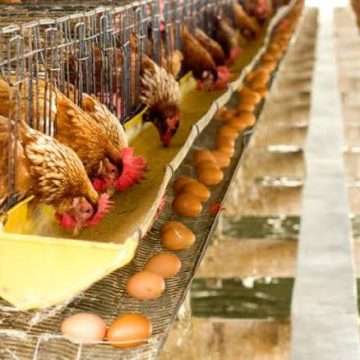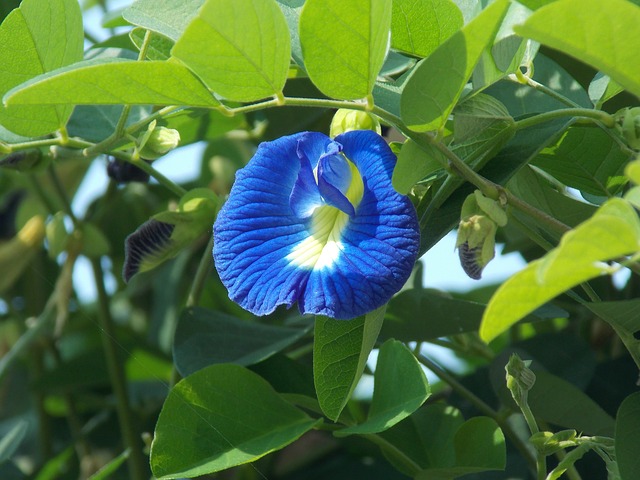Butterfly Pea, botanically called Clitoria ternatea, belongs to the Fabaceae family.
Some of its local names are Darwin pea, Butterfly pea, Blue pea, Bluebellvine, etc.
Clitoria ternatea is a weak-stemmed twiner and has the ‘habit’ of twining on fences or nearby plants.
The leaves are compound, each with five to seven small oval leaflets.
The flowers are used for medicinal purpose has findings have shown it has anti-cancer properties.
Research has also revealed that Butterfly Pea is not poisonous or harmful as there’s a myth about their toxicity.
Butterfly Pea Flower Structure and Properties
The flowers of the Butterfly Pea plant are solitary and deep purplish-blue.
Each flower has a short pedicel, and it’s complete and zygomorphic.
Seven green sepals are fused at their bases to form a cup-like calyx.
At the base of the calyx are two large green bracts.
The corolla is composed of five petals.
The outermost one, which is deep purplish-blue with a yellowish patch inside, is known as the standard petal.
It is the largest and most conspicuous of all the petals.
On the inner side of this petal are two wing petals.
The color of the wing petals is similar to that of the standard petal, however, they are very much smaller in size.
Facing the standard petal are two smaller boat-shaped petals that have fused along their common edges. They form the keel which is whitish.
In the bud, the keel is enclosed by the wing petals, and these in turn by the standard petal.
The bud is protected by the calyx and the bracts.
Enclosed within the keel are the stamens and pistil.
There are ten stamens, nine of which are joined together by their filaments and free only at their tips.
They form a trough-like structure. The tenth stamen is free. The anthers are small, rounded pale yellow structures.
The pistil consists of a carpel that is made up of an elongated, hairy ovary, a curved style, and a flat hairy stigma.
The ovary is superior. there are many ovules arranged along the margin of the carpel.
This sort of placentation is said to be marginal.
The ovary becomes a legume that dehisces to liberate its seeds.
The flower of Clitoria is entomophilous.
Clitoria ternatea Pollination
Bees and wasps visit the flowers of Clitoria in the morning.
These insects are attracted to the flowers by their bright color and the nectar present in them.
The nectar accumulates at the base of the keel of each flower.
When a flower is in full bloom, a bee flitters around it and then alights on the wing petals.
As the bee is fairly heavy, its weight causes the keel to open up and the stamens and stigma to protrude.
The bee then slowly crawls into the keel and sucks up the nectar.
Since the nectar is deep-seated, only insects like the bee, which have long, sucking mouthparts can reach it.
As the bee sucks up the nectar, some mature pollen grains from the anthers are deposited on its hairy body.
The anthers are borne on slightly curved filaments which usually face the wing petals, making it convenient for pollen grains to be deposited on the body of a visiting insect.
The bee with its load of pollen then crawls out and flies to another flower in bloom.
While probing for more nectar, it pushes against the keel, causing the mature stigma and anthers to spring out.
As it crawls in and out of the flower, the stigma brushes against its pollen-dusted body.
In this way, some of the pollen grains adhere to the sticky surface of the stigma.
Hence, cross-pollination occurs. In Clitoria, the anthers mature before the stigma and ovary, to flavor cross-pollination.








